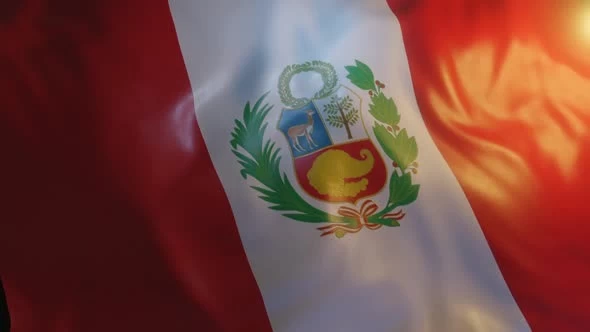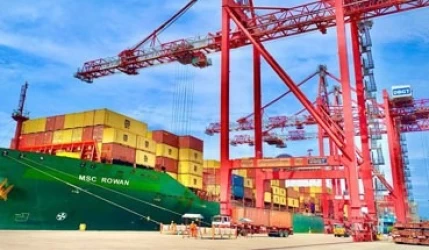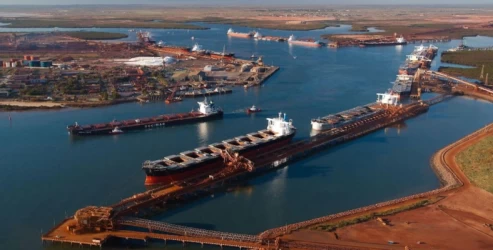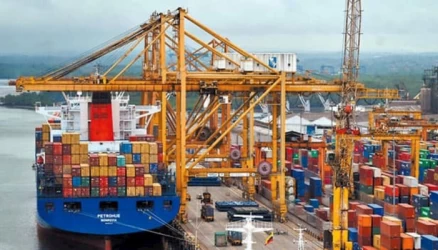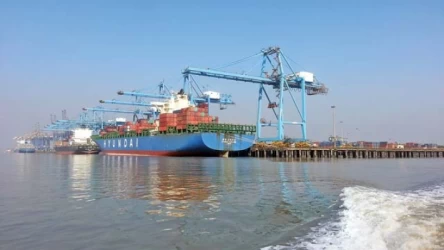Guide to Trade with Peru, Sea Shipping
Peru, a country located on the western coast of South America, has emerged as a dynamic player in global trade. With its diverse economy, rich natural resources, and growing industries, Peru presents lucrative opportunities for international businesses. This guide provides an in-depth look at the key aspects of doing business with Peru and how to navigate the maritime transportation system for efficient logistics.
1. Overview of Peru’s Economy and Trade Opportunities
Peru is one of the fastest-growing economies in Latin America, thanks to its strong mining, agricultural, and manufacturing sectors. The country is rich in natural resources such as copper, gold, and silver, making it a top destination for companies in the extractive industries. Additionally, Peru is a major exporter of agricultural products such as coffee, avocados, and grapes, while its fisheries industry is another critical sector contributing to the country’s economy.
Key Export Sectors:
- Mining: Copper, gold, silver, and zinc are the backbone of Peru’s export economy.
- Agriculture: Coffee, grapes, avocados, quinoa, and asparagus are among Peru’s key agricultural exports.
- Fisheries: Fishmeal and seafood products, particularly anchovies and tuna, form a significant portion of exports.
- Manufacturing: Textiles, chemicals, and machinery also make up an important part of Peru's industrial output.
2. Understanding Peru’s Trade Regulations
Doing business with Peru requires a solid understanding of the country’s trade regulations. Peru is a member of the World Trade Organization (WTO) and is part of various trade agreements that make its market more accessible to foreign companies. Peru has signed multiple free trade agreements (FTAs), including with the United States, the European Union, and several Asia-Pacific countries, which has reduced tariffs and trade barriers for many goods.
Key Points on Trade Regulations:
- Customs Duties: Peru’s tariffs generally range between 0-11%, with many essential goods and raw materials enjoying duty-free status under free trade agreements.
- Licenses and Permits: Certain products, such as pharmaceuticals, foodstuffs, and electronics, may require special licenses or certifications for import.
- Taxation: The General Sales Tax (IGV) in Peru is 18%, which applies to most goods and services.
International companies must comply with customs regulations, including proper documentation for imports, which may include commercial invoices, certificates of origin, and shipping manifests.
3. Maritime Transportation to Peru
Maritime transport is the most cost-effective and common method for shipping goods to Peru. The country has several important seaports, with Callao Port being the largest and busiest, handling a significant portion of Peru’s international trade. Other ports like Paita, Salaverry, and Ilo also facilitate imports and exports, especially for specific industries such as agriculture and mining.
Key Steps in Maritime Transportation:
- Selecting a Shipping Company: Choose a reputable shipping company with experience in South American trade routes. Companies like Maersk, MSC, and Hapag-Lloyd offer services to and from Peru.
- Preparing Cargo: Goods must be properly packaged and labeled according to international standards to avoid damage and delays during transport.
- Documentation: Essential documents include the Bill of Lading (B/L), commercial invoice, packing list, and any certificates required by Peruvian authorities.
- Customs Clearance: Upon arrival, goods will undergo customs inspection, and any applicable duties and taxes must be paid before the cargo is released.
Advantages of Maritime Transport:
- Cost Efficiency: Shipping by sea is usually the most economical option, especially for large and heavy goods.
- High Capacity: Ships can handle large quantities of goods, making it suitable for bulk shipments of commodities like metals, agricultural products, and machinery.
4. Major Seaports in Peru
Peru's coastline is home to several vital seaports that facilitate trade. Each port serves different regions of the country and is specialized in handling various types of cargo.
- Port of Callao: The largest and most important port in Peru, handling about 70% of the country’s maritime cargo. It is well-equipped for container shipments, bulk goods, and general cargo.
- Port of Paita: Located in northern Peru, this port is significant for the export of agricultural products, especially fruits and fish products.
- Port of Matarani: Serving the southern region of Peru, this port is critical for the mining industry and bulk shipments of minerals.
- Port of Salaverry: Positioned near major agricultural zones, Salaverry plays an important role in exporting grains, sugar, and fish products.
5. Challenges in Trade and Maritime Transportation with Peru
While Peru offers numerous opportunities, businesses must be aware of the challenges they may face when entering the market or shipping goods to the country.
Infrastructure Limitations:
Despite improvements in major seaports, Peru's internal transportation infrastructure can be underdeveloped, particularly in rural and remote regions. This can make it challenging to transport goods from the coast to inland areas.
Bureaucratic Processes:
Peruvian customs can sometimes be slow and bureaucratic, resulting in delays. Businesses should work with experienced customs brokers to navigate these processes smoothly.
Currency Fluctuations:
The Peruvian currency, the Sol (PEN), can be subject to exchange rate fluctuations, which may impact pricing and profit margins. Companies should account for this risk when planning trade deals.
6. Best Practices for Successful Trade with Peru
- Market Research: Conduct thorough market research to understand the demand for your products in Peru. Knowing the competitive landscape, consumer preferences, and potential partners will provide valuable insights.
- Partner with Local Experts: Establishing partnerships with local distributors, agents, or customs brokers can simplify the logistics and legal aspects of doing business in Peru.
- Utilize Free Trade Agreements: Take advantage of Peru’s numerous FTAs to reduce tariffs and streamline trade processes for your goods.
- Invest in Relationships: Building strong relationships with local stakeholders, from government officials to business partners, is key to long-term success in Peru’s market.
Conclusion
Peru offers abundant opportunities for businesses across various sectors, from mining and agriculture to manufacturing and services. By understanding the country’s trade regulations and leveraging its robust maritime transport system, companies can effectively navigate the challenges and capitalize on the benefits of doing business with Peru. Whether exporting agricultural products or importing machinery, investing in the right logistics partners and complying with local regulations are crucial for a successful trade venture with Peru.
If you have any specific questions or need further assistance, feel free to ask!

